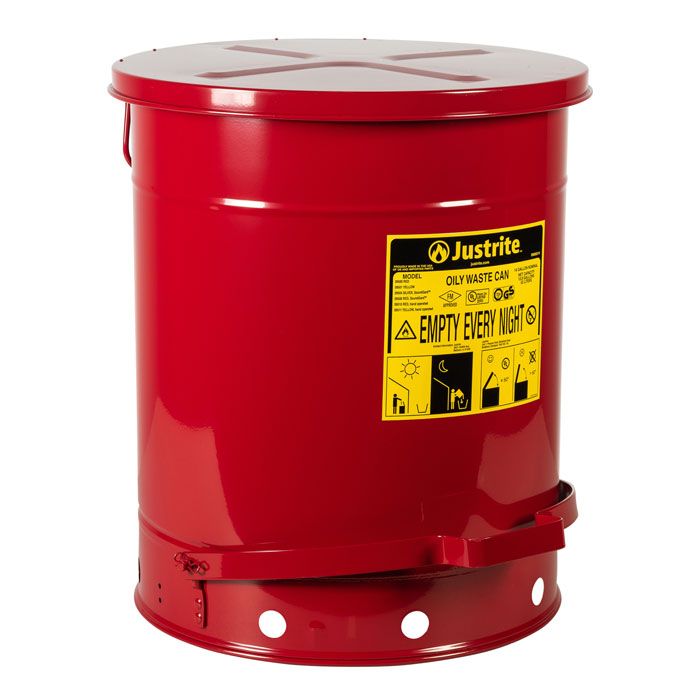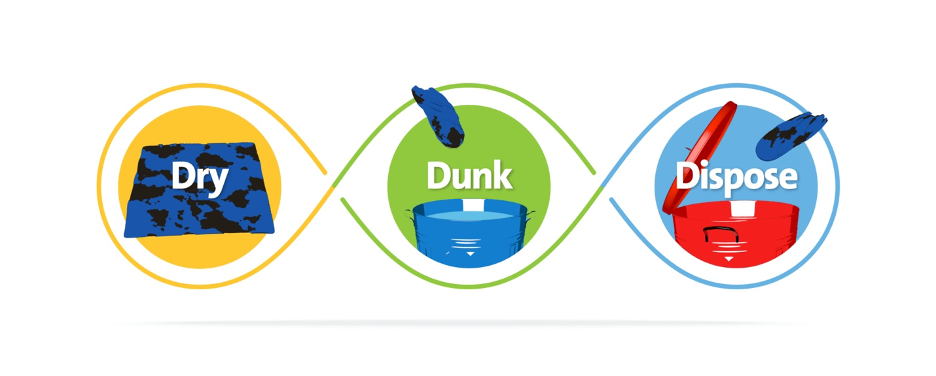So you or a contractor just refinished your deck, painted the fence or worked on your car…are the oily rags dangerous? Most people think they are harmless and come to find out that spontaneous combustion is a real thing. We just had a client Norwalk CT House Fire client that had major fire damage due to a contractor leaving oily rags after refinishing the hardwood flooring. The contractor left a pile of oily soaked rags on the floor and sure enough, they self ignited causing serious damage to their home.
As we prepared this post, we found a lot of articles stating that spontaneous combustion cannot happen. INCORRECT, liquids and or rags soaked in combustable liquids such as paint thinner, kerosene, and oil-based paints and stains are just a few examples that create heat and can ignite on their own. This may seem unbelievable and we went as far as finding a global leader in applied safety science, UL Solutions who partnered with a fire department to create a demonstration you watch by clicking here.
What are common combustible oils?
We again leveraged industry experts like UL Solutions to help identify oils that pose a threat. They had a great article that focuses on common DIY projects, for example; changing your engine oil, oil-based primers that are often used on cabinets, furniture stain, refinishing oil for hardwood flooring or decks. UL states that all oily rags are a fire hazard, certain types of oils like linseed oil are the most likely to self-ignite. Even rags that are used to clean up spills or clean off tools need to be disposed of properly.
List of combustible oils (Always Check Labels and Consult with Experts before using Flamable Liquids and Chemicals:
- Linseed oil and all drying oils
- Wood stains
- Alkyd enamel resins (which is a binder in oil-based coatings)
- Motor fuels, engine oil and lubricants
- Primers, sealers, paints, pigmented shellac, paint thinner, turpentine, mineral spirits and denatured alcohol
Can Rags Really Ignite on Their Own?
Here are a few quotes from Bob Backstrom who is the Fire Research Manager of Retail and Industrial Research and Development at UL Solutions, “Rags that are soaked with combustible oils create and release energy and heat,” as well as “When rags are tightly packed in a confined space, there’s an effect of insulating the pile. The energy and added heat can’t dissipate fast enough and the temperature of the oil-soaked rags increase.”
UL Solutions Spontaneous Combustion News Story
How Many Home Fires are Caused by Spontaneous Combustion?
The National Fire Protection Association (NFPA), shares on their website safety tips pdf titled; “Safety With Oily Rags” that an average of 1,700 home fires are caused by instances of spontaneous combustion or chemical reactions.
How to Prevent Fires from Oily Rags
UL Solutions shared three words never to forget when it comes to oily rags; DRY, DUNK, DISPOSE. Now most residential homeowners do not have a safety certified oil or combustible liquid waste container laying around the house and or garage. However, your local dump and or fire department will have the proper information for where you can dispose of oily waste to reduce fires.
If you are looking for a place where oily waste disposal units can be purchased, simply search the internet or go to JustRite.

Thanks to UL Solutions, here is a breakdown of UL’s DRY, DUNK, DISPOSE instructions:
Dry
Lay the rags out individually on the driveway, garage floor or sidewalk or hang them out to dry. Provide at least a half of a foot of space between each one. If you’re indoors, make sure there’s proper ventilation. Let the oils dry out. This helps the heat and energy release into the air.
Dunk
Once dry, get them wet again, this time with water. Dunk each rag individually in a container of water. This could be an empty coffee can, empty paint can or bucket of water. You can also flood them with the garden hose or drench them in a utility sink.
Dispose
If you used an old coffee or paint can to dunk the rag, discard the oily water. Refill it with clean water, submerge the rag inside and close the top. If you don’t have an old can, fill a resealable bag with water, submerge the rag inside and seal the bag. Then, contact your local garbage facility to find the nearest hazardous waste disposal drop off.
Thank you for reading this post, thank you to UL Solutions for the education and please remember too Dry, Dunk and Dispose.

Reference Links:



